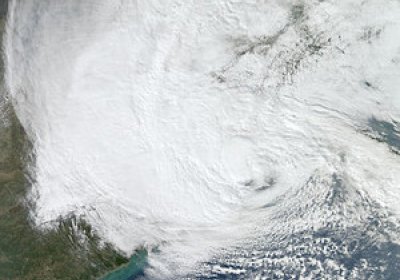Climate change catastrophe has confronted hundreds of thousands of people of the eastern seaboard of the United States and on the Philippines island of Luzon, writes Phil Hearse, as Hurricane Florence and Typhoon Mangkhut made landfall simultaneously.
Hurricane Sandy
 Tacloban, Leyte, Philippines, after Typhoon Haiyan in 2013. Photo: Tony Iltis.
Millions of people fleeing storms that flood major cities within hours, or intense fires that burn towns to the ground — welcome to a climate change apocalypse. It is not a scene from science fiction film, but a fast approaching reality.
Tacloban, Leyte, Philippines, after Typhoon Haiyan in 2013. Photo: Tony Iltis.
Millions of people fleeing storms that flood major cities within hours, or intense fires that burn towns to the ground — welcome to a climate change apocalypse. It is not a scene from science fiction film, but a fast approaching reality.
The Venezuelan government has begun to send shipments of over 646 tons of much needed humanitarian aid to Cuba and Haiti after both countries were hit by Hurricane Sandy. The aid includes mostly non-perishable food items and water, as well as machinery to help remove debris.
The hurricane first struck the Caribbean last week before heading north to the US. So far, Haiti has been the worst hit by the disaster, counting a death toll of 54 people, followed by 11 in Cuba. (By November 4, the US death toll was well over 100 and growing.)
Democracy Now! show on November 1 on inequality in New York and its impact in the current crisis, and also the struggle in Syria.
Hurricane Sandy was the largest tropical storm to ever hit mainland United States.
Its extent, power and the fact that it formed so late in the hurricane season so far north in the Atlantic ocean can only be understood in light of global warming caused by the burning of fossil fuels.
For many years, scientists have been warning that the rise in water temperature in the oceans would create more powerful storms, and that is what happened in the case of Hurricane Sandy.
The devastating impact of Hurricane Sandy on impoverished Haiti has received far less attention than the havoc wrecked by the superstorm on the United States' east coast. This lack of coverage extend as far as US site WFSB.com reporting on October 30 on the "first Sandy-related death", days after as many of 65 people in the Caribbean (51 in Haiti) had been killed by the freak storm.
Below, progressive alternative news outlet based in the US, Democracy Now!, looked at Sandy's impact on Haiti and the Caribbean in this October 29 report.
“If the study to which you apply yourself has a tendency to weaken your affections, and to destroy your taste for those simple pleasures in which no alloy can possibly mix, then that study is certainly unlawful, that is to say, not befitting the human mind. If this rule were always observed; if no man allowed any pursuit whatsoever to interfere with the tranquility of his domestic affections, Greece had not been enslaved; Caesar would have spared his country; America would have been discovered more gradually; and the empires of Mexico and Peru had not been destroyed.” -- Dr.
As of October 27, Hurricane Sandy, a storm so freakish it has been termed “frankenstorm”, had killed at least 38 people in Caribbean nations and was bearing down on the north-east of the United States.



